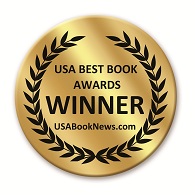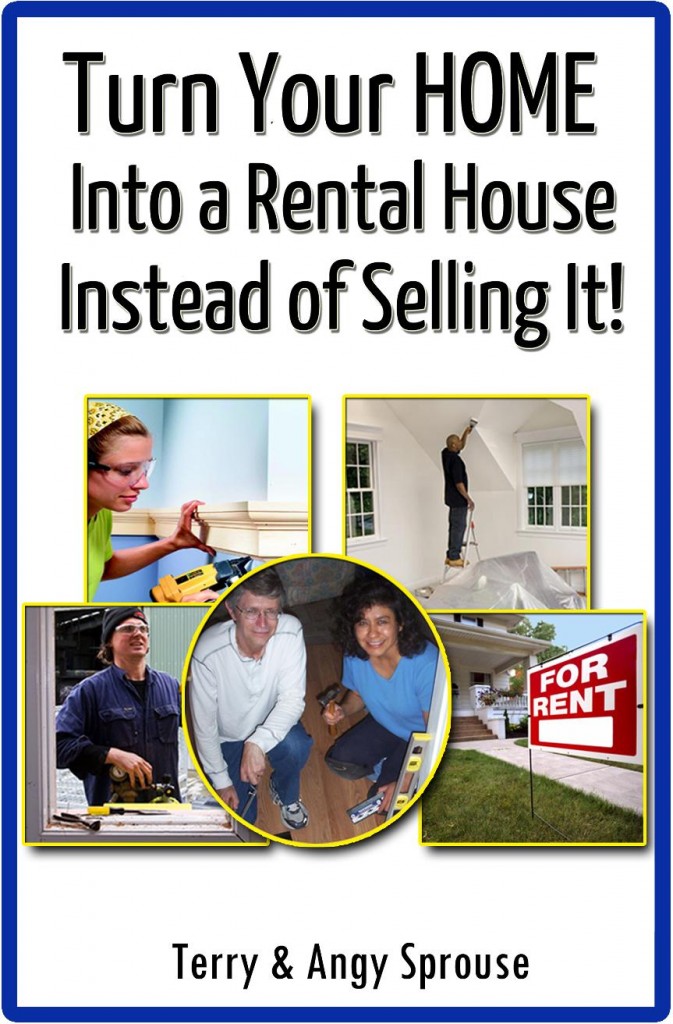Archive for the ‘repair books’ Category
Friday, August 10th, 2012


The Arizona Network of Real Estate invited me to give a presentation to their group about my book “Fix em Up Rent em Out.”
I thought the video might be available to the general public but it looks as though that’s not going to happen.

However, so that no one feels left out, I am going to provide a summary of the key points that I hit during the presentation. As someone who was regularly picked last for teams in gym class, I’m sensitive to people feeling left out. Casting modesty to the wind, I am also including exclusive photos of the event.
So here are:
The 5 Rules on How to Lose Money and Get Your Rental Property Trashed by Tenants (based on an article by Andrew Stefanczyk)
1. Choose the Worst Possible Area
Location will determine the kinds of tenants you will attract, and how much rent you can fairly charge.

Do you want these bearded wonders as tenants?
The best approach is to identify target areas in your city where you would like to focus your purchases. I like to focus on “transition zones” (where there is a mixture of housing types) which are good for investors because we can purchase properties at lower prices, and there is high demand to live in these areas.
2. Put in the very best of things when fixing up an investment property
Use new and expensive sinks, doors, refrigerators, light fixtures, etc. Never shop at stores that recycle construction supplies. Spare no expense.
Of course, the problem is that tenants will not take care of our properties as well as we would,

Habitat Store
so we end up with many broken or worn out items. The better alternative is to shop at used building supply stores, and to purchase good, inexpensive, supplies for our rental houses. One such store is the Habitat for Humanity store.
3. Make sure you have absolutely no experience in make basic repairs
Not knowing how to change electrical outlets, unclog drains & toilets, and replace broken windows will cost quite a bit down the road.
The better way is to:
A. Learn as you go, and comply with EPA regulations
B. Take construction classes at junior college
C. Learn from handymen and contractors
D. Take the Zen approach to house repair — learn to do everything yourself
5. Utilize fix-up books, investing books, & YouTube to find answers on how to make house repairs
4. Do not screen your tenants
Being as uninformed as possible about who you rent to may be the best way to lose money as a landlord. Do not ask for or check references. Do not call previous landlords and ask questions like, did they pay rent on time? How was the condition of the house or apartment when they left? Did they ever disturb neighbors with loud music or shouting matches? How often would you have to make special trips for repairs? Being as uninformed as possible about whom you rent to will make a huge difference and will increase the chances that you will get tenants that will trash your property and refuse to pay rent.
However, the better way is to:
A. Use a checklist for tenants. Decide what kind of tenant that you want ahead of time.
B. Look at their paycheck to verify income.
C. Check county records to see what illegal activities they’ve been up to.
D. Know the Fair Housing Act. Never select tenants based strictly on “race, color, national origin, religion, sex, familial status or handicap (disability).”
E. To find new tenants, use Craiglist, put up arrow signs, and host an “open house.”
5. Make sure you have not learned about your rights as a landlord
Be completely unfamiliar with the eviction process to guarantee long, drawn out disputes with tenants. Don’t keep up to date financial records or copies of correspondence with tenants. Most states provide online information about tenant and landlord rights so avoid reading these.
The better way is:
A. Get an authoritative legal guide like “The Arizona Landlord Deskbook” by Carlton Cassler.
B. Copy forms and letters from your legal book to send to tenants.
C. Comply with legal ways to deal with bad tenants.
D. Use memos to communicate with tenants so you have a record of correspondence.
E. Use a month to month lease instead of long-term lease to more easily scrape off bad tenants like barnacles.
F. Reward tenants for paying on time by discounting their rent $25. 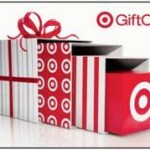
G. Send good tenants Target gift cards for Xmas.
In Conclusion
Share Your Knowledge
“Each of us has cause to think with deep gratitude of those who have lighted the flame within us.”
–Albert Schweitzer
Carve Out Your Niche Update
My award-winning book on self-publishing, Carve Out Your Niche, is now available in Kindle format.
The Midwest Book Review called Carve Out Your Niche,
“Invaluable for anyone seeking to successfully write, publish, and market their own work.”
Related Posts
Tags:Arizona Network of Real Estate, avoid losing money with rental houses, buying rental houses, carve out your niche, construction materials, do it yourself, Habistore, Habitat for Humanity, landlord rights, learn to make repairs, managing tenants, screen tenants, share your knowledge, target areas, transition zones, Zen
Posted in Arizona Landlord Deskbook, book review, book review real estate investing, book reviews, buying real estate, carve out your niche, create wealth in real estate, do it yourself, excellent real estate books, finding tenants, Fix em Up Rent em Out, fixer upper book, fixer upper houses, for rent, home buying, house buying, house repair, house repairs, how to make money renting housing, How to manage tenants, How to start your own house fix up and rental busines, investing in real estate, investment house, investment property, investmet properties, landlording, learn repair skills, learn to invest in real estate, learn to make repairs, legal information, making repairs, managing tenants, maximize rental profits, month to month lease, mortivation, opportunity zone, places to advertise for a tenant, presentations, quirky tenants, real estat investing, real estate books, real estate investing, real estate principles, rental house improvements, rental houses, rental management, rental properties, rentals, renting, repair, repair books, repairing properties, repairing rental houses, repairs, selecting tenants, share your knowledge, success, tenants, tenents, transition zone, Zen of Real Estate Investing | 23 Comments »
Monday, July 2nd, 2012
One of the jobs associated with operating a fixer upper and rental house business is to keep your rental properties in ship shape!
With the annual approach of summer rains, now is almost the last chance to make rental house roofs water proof before the watery onslaught. As someone who has a sworn aversion for arriving too early to parties, I subscribe to the time-tested philosophy of “better late than never.”
This morning I applied some black roofing cement on some areas on one of my townhouse roofs. I had located some cracks upon my inspection of it about 2 weeks ago.
The first photo shows the area in question, where I had previously applied a small amount of plastic roofing cement, but today I was going to put on some more and cover a broader area.

The second photo shows the application of the plastic roofing cement. We apply one layer of cement, then put a white membrane on top of that, followed by a second layer of cement. The membrane allows for more cement to be applied.

Below is the “after” photo. You can see that in addition to the corner, we hit a few other cracks with our roofing cement on the sides of theroof. Later, we’ll come back with white roofing paint to cover the black cement.
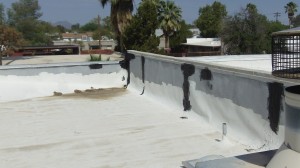
A good rental house
My wife and I purchased this 2 bed 2 bath townhouse in 1993 and lived in it for 10 years before moving on to a bigger house (to accomodate our growing family), and turning this property into a rental house in 2003.
Its been one of our best rental houses because it is in a “transition” zone (aka “opportunity zones”) where there is heavy demand for housing, and it is easy to care for because it is compact (1100 sq ft with small front and back yards). The townhouse perfect for single people or small families.
We originally purchased it for $53,000 and we charge $750/month (more if the tenants have pets).
Related Posts
Tags:fixer upper houses, fixing leaks on roofs, opportunity zones, roof repair, transition zones
Posted in Fix em Up Rent em Out, fix up houses, fixer uppers, fixer-upper business, flipping houses, house repair, house repairs, How to manage tenants, how to start a real estate business, How to start your own house fix up and rental busines, learn repair skills, learn to make repairs, making repairs, managing apartments, managing tenants, maximize rental profits, opportunity zone, property damage, purchase second home and turn current home into rental, rental house improvements, rental house protection, rental houses, rental management, rental properties, rental property, rentals, renting, repair, repair books, repairing properties, repairing rental houses, repairs, spare time, tenants, tenents, transition zone, turn my home into a rental, turn your house into a rental, turning a primary into a rental, turning an owner occupied home into an investment property, turning my home into rental property, turning your home into a rental property, Uncategorized | 15 Comments »
Thursday, April 5th, 2012
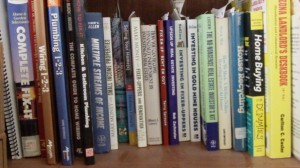
The fixer-upper house business is a great business to be in these days. But, if you are just starting out, and are as green as a gourd, as I was, you need some help.
To speed up the learning processes, you need to have a collection of reference books on home repair, buying and selling houses, rental properties, tax law and all other aspects of real estate.
If a home without books is like a body without a soul, then a fixer-upper business without reference books is like a cook without a cookbook.
You may not know everything at the start of your new business and you may need help in some areas, especially in the initial stages. However, each time you pay to have someone do work for you, or go through some new process, you should observe everything, ask questions and learn the process.
That way, the next time you will be able to do it yourself, or at least perform a larger part of the project. The key is to keep doing things over and over until you master how it works. You will eventually reach a point where you make decisions of where to make repairs and which houses to buy based on your instinct.
Books will help you to reach that point sooner.
Here are some books that I have found particularly useful to have on hand:
1. Fix em Up, Rent em Out, by yours truly. Yes, believe it or not, I read my own book! Anyone who says otherwise, is just itching for a fight.
2. Investing in Fixer Uppers, by Jay DeCima. His first, and still my favorite, of his books.
3. Investing in Real Estate, by Gary Eldred.
4. Arizona Landlord’s Deskbook (or the equivalent for your state.) by Carlton Casler.
5. Real Estate Debt Can Make You Rich, by Steve Dexter.
6. Wiring 1-2-3, by Home Depot
7. Plumbing 1-2-3, by Home Depot
8. Tiling 1-2-3, by Home Depot. Are you getting the impression that I like the Home Depot books? In addition to mastering the art of tile installation, I made my first grout repair after reading this book.
9. Fix it Yourself Manual, by Reader’s Digest.
10. Upside Up Real Estate Investing, by Bob Zachmeier (teacher of the first real estate class that I took).
Tags:Fix em Up Rent em Out, fixer upper houses, investing in fixer upper houses, investing in real estate, real estate books, upside up real estate investing
Posted in Fix em Up Rent em Out, Fixer Jay, fixer upper book, fixer upper houses, fixer uppers, fixer-upper business, how I got started in fixer uppers, how to make money renting housing, how to start a real estate business, How to start your own house fix up and rental busines, investing book, investing in your spare time, real estat investing, real estate books, real estate investing, rental house improvements, repair books, repairing properties, repairing rental houses, reviewing books and records, turn my home into a rental, Upside Up | 13 Comments »
Saturday, March 3rd, 2012
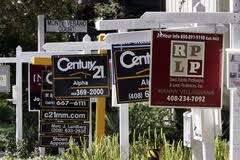
“The greatest real estate fire sale in the history of the United States rages on.”
— CNBC
Foreclosed properties are selling like hotcakes. Now is a great time to get some great deals on investment properties Besides the price, below are four reasons why you can count on real estate to provide you with security today and in the future.
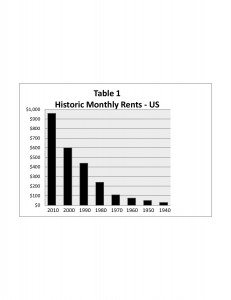
Cash flow
With a good rental property, after all the expenses have been covered, including mortgage, vacancy rate, repairs, and property management, you can still receive a good cash flow. This provides a reliable monthly income for as long as you want to keep the property. As the amount of rent that you charge goes up, your profits go up. See Table 1 (U.S. Census Bureau, 2012) for historic monthly rents in the U.S., from the U.S. Census Bureau.
Demand for Housing
There will be always be people in need of a place to live. With our growing population, a gain of one American born every 14 seconds, we will have a population of 400 million by 2050. Based on our current immigration patterns and population growth, there will continue to be a demand for housing well into the foreseeable future.
Appreciation
In the short term, housing appreciation seems to unpredictably rise and fall. However, in the long term, over a 60-year period, house values show a steady and consistent upward trend. According the U.S. Census Bureau, from 1940 to 2010, the average increase in the value of a house was about 5% per year, adjusted for inflation. Table 2 (U.S Census Bureau, 2012) shows historic home values.
While appreciation of 5% may seem low to some people, when we consider that we only put a small percentage down, between 5-20%, and we receive monthly rent checks that more than cover mortgage payments, it begins to make sense. If we don’t allow periodic dramatic rises and falls in home values to shake our confidence, we can count on steady, long-term, profits from our investment properties.

Tax savings
Our kindly Uncle Sam wisely gives tax incentives to real estate investors. The federal government allows you to depreciate your investment (or reduce your taxes to account for physical deterioration of the house) on Schedule E of your annual tax form. In addition, you deduct expenses related to your investment from your gross income on IRS Form 1040, and reduce the amount of income that you pay taxes on.
How to Force Yourself to Write
Tags:purchasing foreclosed properties, real estate fire sale, real estate investing, rental houses
Posted in buyer's market, buying fixing renting rehabs, buying foreclosures, buying real estate, Fix em Up Rent em Out, fix up houses, foreclosures, home buying, home foreclosures, house buying, investing in your spare time, investment house, investment property, investments, mortivation, real estate investing, real estate principles, recession and real estate, rental properties, repair books, repairing properties | No Comments »
Thursday, August 21st, 2008
Tags:fixer upper house business, home repairs, lean to make repairs, making repairs
Posted in buying fixing renting rehabs, do it yourself, Fix em Up Rent em Out, fix up houses, fixer upper houses, fixer uppers, house repair, house repairs, learn repair skills, learn to make repairs, making repairs, painting, rental property, repair, repair books, repairing properties, repairing rental houses, repairs | 3 Comments »
Friday, December 21st, 2007
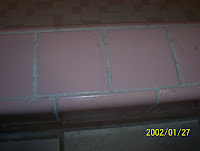
A common problem encountered in older houses is the grout can look dirty. For the 1957 fixer upper house that my wife and I are presently working on, the tile grout in the master bathroom was dingy (see picture above). My plan since I bought the house was to remove the old grout and replace it with new grout.
However, last week before beginning the grout removal, I checked my copy of Home Depot’s book “Tiling 1-2-3“. The book suggested cleaning the grout to bring it back to its old glory.
So I purchased some Agua Mix Grout Deep Clean, and some White Tile Grout Coating for good measure.

First, I used my grout saw to lightly scrape off dark spots in the grout.
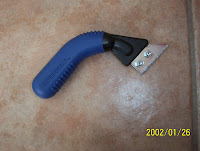
Then, I used the Grout Deep Clean, which to my surprise, actually did make the grout look cleaner. I let the liquid “dwell” on the grout for 5 minutes, I “agitated” it with a scrub brush, then I waited 2 hours for it to dry. But it still wasn’t as bright as I would have liked.
Next, I liberally applied the Tile Grout Coating to the grout.
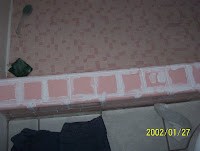
The coating did a remarkably good job of coloring the grout to a strong color of white. I was very happy with the results. After the coating dried I applied grout sealer.
After all was done, the grout looked like this.
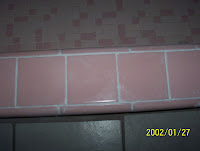
So, the lesson is, as long as the grout is not badly cracked, you’re better off cleaning and coating the old grout. It can save you a lot of time.
Info on Terry’s Book

 Subscribe in a reader
Subscribe in a reader
Share this: del.icio.us | Digg | Ma.gnolia | Reddit | Stumble Upon |
Tags:Fix em Up Rent em Out, fixing tile grout in old houses, repairing fixer upper houses, tile grout coating
Posted in fix up houses, fixer upper houses, fixer uppers, fixer-upper business, fixing rental houses, grout, grout replacement, house repair, house repairs, learn repair skills, learn to make repairs, making repairs, property damage, real estate books, rehab, rental house improvements, repair, repair books, repairing properties, repairing rental houses, repairs | 1 Comment »
Sunday, November 18th, 2007
Sunday, work continued on the fixer-upper house that we live in, and plan to sell (for more info on this investing strategy, see “How to Turn Your Home into a Rental Property, Instead of Selling It!” coming in Sept. 2012.) There was a little grouting left to do in one of the
bathrooms, around the tiles that made a baseboard-type border abound the bathroom floor.
Here are the tools I used – small bucket, white grout, a trowel, and a small “mud” (or joint compound) spatula (not pictured)

I mixed up a small amount of grout. Add water to the powder until you have grout the consistency of peanut butter.
When I mix grout, I wear a mask or kerchief to cover my mouth and nose. The grout mix contains cement, so if you breath in the powder it can scar your lungs.

I apply the grout with the small spatula.
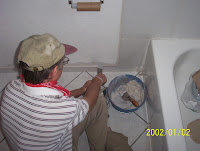
Afterwards, I clean up tools with water.
After the grout has cured for three days, I apply grout sealer.
There are two pretty good books on floors and tiling published by Home Depot, “Tiling 1-2-3” and “Flooring 1-2-3“. I recommend “Flooring 1-2-3”, if you just want to buy one book. It cover tiles about as well as the other book, and also addresses how toinstall several other types of flooring. I used it as a guide to install both laminate flooring, and vinyl flooring.
As always, to make money in the fixer-upper business its best to do everything yourself. You learn by doing. Start small but work up to bigger projects.
Our first tiling project was in a small bathroom, a good place to learn the process. But since then, my wife and I have worked our way up to doing large bedrooms. We feel comfortable tackling any tiling project now.

 Subscribe in a reader
Subscribe in a reader
Share this: del.icio.us | Digg | Ma.gnolia | Reddit | Stumble Upon |
Tags:books on tiling and flooring, do it yourself, fixer upper house business, grouting project in bathroom, Home Deport books, start, turn your home into a rental property
Posted in do it yourself, fixer upper houses, fixer uppers, fixer-upper business, fixing rental houses, grout, house repair, house repairs, how to turn your home into a rental property, making repairs, rental house improvements, rental houses, rental properties, rental property, rentals, repair, repair books, repairing properties, repairing rental houses, repairs, small investor, start small, Uncategorized | 2 Comments »
Wednesday, September 26th, 2007
This of Part 2 of my reponse to a question asking, “My background is not in the building trades. How do I learn the required skills to start a business in repairing houses and renting them out?”
How to learn the appropriate skills:
3. Draw on the Past
After I got more involved in the repair work of our houses, I thought back about how my father had taught me a lot by example. I recall seeing him construct screened-in porches on various houses that we had lived in. I was too young to help out much at the time, or to appreciate what he was doing, but looking back I realize that it required a strong desire to learn the basic principals, and a sense of self-confidence to build it. He had no formal training in construction, and didn’t have reference books like I do, but he learned by observing other porches that had been built in the neighborhood.
I also have a friend who has made a career out of living frugally. He does virtually all of his own house repair and car repair work. If he gets stuck, he goes to the library and finds books to help him. It helps that he has a background in teaching vocational eduction. We have helped each other with house repair projects over the years, and he is a source of practical advice when I need help.
You too may have family members, or friends, that you can draw insight and inspiration from when it comes to making repairs.
4.Create a House Repair Library
I like to scour the fix-up book areas at used book stores for good buys. I buy a book as soon as I see it if I know that it has valuable information. In the past, I have waited to purchase the book only to return later and find that the book I had wanted was gone. The price you pay will literally be a drop in the bucket compared to the money you will save. I have books on almost every possible repair topic, including electrical wiring, plumbing, flooring, you name it. Some books that offer information on a wide variety of repairs, such as Reader’ Digest “Fix-it Yourself Manual” and Better Home and Gardens Complete Guide to Home Repair,” are also good to have. See my earlier blog for more infomation on recommended repair books.
When a book is not enough, I can usually get good advice on specific jobs at hardware stores, like Ace Hardware. And, you can sometimes get advice on difficult repairs by doing a Google search.

 Subscribe in a reader
Subscribe in a reader
Share this: del.icio.us | Digg | Ma.gnolia | Reddit | Stumble Upon |
Tags:draw on the past, fix em up rent em out start a business, fix up books, learn how to repair rental houses
Posted in buying fixing renting rehabs, buying real estate, do it yourself, excellent real estate books, Fix em Up Rent em Out, fix up houses, fixer upper houses, fixer uppers, fixer-upper business, home buying, house buying, house repair, house repairs, how I got started in fixer uppers, how to make money renting housing, how to start a real estate business, How to start your own house fix up and rental busines, invest real estate repai and sell or rent, investing, investing book, investing financial independence, investing in real estate, investing in your spare time, investment house, investment property, learn repair skills, learn to invest in real estate, learn to make repairs, making repairs, managing tenants, real estat investing, real estate books, real estate principles, rental house protection, rental houses, rental management, rental properties, rental property, renting, repair, repair books, repairing properties, repairs, safe ways to invest in real estate, small investor, spare time | 1 Comment »
Monday, September 10th, 2007
For those of us in the fixer upper rental house business I like to share interesting books that I happen to be reading.
I am presently reading Bryan Wittenmyer’s book Perpetual Income: How to Generate Cash Flow from Low-End House Investment. The author writes a book that truly gets down to the nuts of bolts of all aspects of finding, buying and renting low-income properties. A lot of real estate books are 90% fluff and 10% substance. This book is 100% substance.
The key, as Wittenmyer explains it, is to buy low-end (and not slum) housing because it is cheaper to buy, pays a pretty good monthly rent, and can be paid off quickly. This book has an enormous amount of really practical suggestions that apply to both low-end housing as well as middle-end properties.
I particularly enjoyed his section on what to repair, in recognition of the fact that the tenants will not take care of the property anyway. I like his practical advise on how to repair typical rental problems, but by spending the absolute least amount of money in the process. One suggestion was to mix leftover paints together in a five gallon paint bucket, and use the resulting grey paint to paint attics, or other areas where the color doesn’t matter. He also suggests not washing a wall before painting (unless heavy dirt exists) because paint can do a great job of covering the fingerprints and odors. Wittenmyer says, “why waste time cleaning when you can paint over it?”
I couldn’t agree more.
Share this: del.icio.us | Digg | Ma.gnolia | Reddit | Stumble Upon | Technorati
Tags:Bryan Wittenmyers, do it yourself, fixer upper rental house business, house repairs, how to generate cash flow from low-end house investment, Perpetual Income, rental house repairs
Posted in fixer upper houses, fixer uppers, fixer-upper business, fixing rental houses, for rent, house repair, house repairs, real estate investing, rental house improvements, rental houses, rental properties, rental property, rentals, renting, repair, repair books, repairing properties, repairing rental houses, repairs | No Comments »
Thursday, August 23rd, 2007
**Book Update** My forthcoming book entitled “Fix ’em Up, Rent ’em Out: How to Start Your Own House Fix-up and Rental Business in Your Spare Time” is in the final stages of production and will be available at Amazon.com in September 2007.
In operating a house fix-up and rental business in my spare time, I have found the following books to be very useful. If I encounter a repair that I have never done before, the books on the link below are my guides.
In 400 B.C. Archimedes said, “Give me a lever long enough, and a fulcrum upon which to place it, and I shall move the world.” Your tools and books are your lever and fulcrum. Once you have them there will be no stopping you.
House Repair Books – The Best of the Bunch
Share this: del.icio.us | Digg | Ma.gnolia | Reddit | Stumble Upon | Technorati
Tags:Fix em Up Rent em Out, house repair books, multiple streams of income
Posted in Fix em Up Rent em Out, fixer upper book, fixer upper house books, house repair, house repairs, real estate, real estate books, repair, repair books, repairing properties, repairing rental houses | No Comments »


















